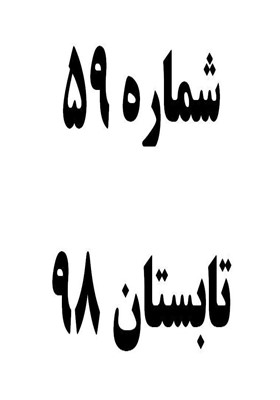شناسایی شایستگیهای پژوهشی مورد نیاز و متناسب با دوره دوم ابتدایی
محورهای موضوعی : علوم تربیتیمهدی حسین پناه 1 * , مرتضی کرمی 2 , حسین جعفری ثانی 3 , حسین کارشکی 4
1 - آموزش و پرورش، قوچان، ایران
2 - علوم تربیتی، دانشکده علوم تربیتی و روان شناسی دانشگاه فردوسی مشهد، ایران
3 - علوم تربیتی، دانشکده علوم تربیتی و روان شناسی دانشگاه فردوسی مشهد، ایران
4 - علوم تربیتی، دانشکده علوم تربیتی و روان شناسی دانشگاه فردوسی مشهد، ایران
کلید واژه: برنامه درسی, دوره دوم ابتدایی, شایستگی های پژوهشی,
چکیده مقاله :
هدف این تحقیق، شناسایی شایستگیهای پژوهشی مورد نیاز و متناسب با دوره دوم ابتدایی است. در این تحقیق، با استفاده از رویکرد طراحی یا ایجاد یک مدل از پایه(الگوی بیهام و مایر)، این شایستگیها طی پنج گام شناسایی شدند. در گام اول، تعداد 105 شایستگی از نظرات 24 صاحبنظر استخراج گردید. در گام دوم، تعداد 49 شایستگی در مصاحبه های نیمه ساختار یافته با 14 متخصص و معلم خبره، به دست آمد. در گام سوم، برای تلخیص و دستهبندی 154 شایستگی پژوهشی فوق، از تکنیک دلفی استفاده شد؛ که در نتیجه نظرسنجیهای انجام شده از 10 متخصص علوم تربیتی و روان شناسی، 18 شایستگی پژوهشی مورد نیاز دوره دوم ابتدایی، شناسایی شدند. سپس برای هر شایستگی، سه سطح تعریف و مصادیق عملکردی هر سطح مشخص گردید و متخصصان، سطح متناسب با دوره دوم ابتدایی را تعیین نمودند. در مرحله چهارم، شایستگیهای پژوهشی شناسایی شده توسط 6 متخصص علوم تربیتی و روان شناسی با ضریب کاپای کوهن اعتباریابی شدند و در مرحله آخر، چارچوب ساختاری شایستگیهای پژوهشی مورد نیاز و متناسب با دوره دوم ابتدایی ترسیم گردید. این شایستگی ها با توجه به ماهیتشان در سه دسته شامل شایستگی های فنی و تکنیکی(نوشتن سؤال تحقیق، طراحی تحقیق، جمع آوری اطلاعات، تجزیه و تحلیل داده ها، جمع بندی و نتیجه گیری، تنظیم و ارائه گزارش، ارزیابی تحقیق)، شایستگی های فردی و شخصیتی(کنجکاوی، علاقه مندی و انگیزه، تلاش و پشتکار، سعه صدر و تحمل شکست، خودکارآمدی، برقراری ارتباط و همکاری) و شایستگی های ادراکی(تصمیم گیری، استدلال، پیش بینی، مقایسه کردن، تفکر) قرار گرفتند.
The purpose of this research is to identify the research competency required and appropriate for the second elementary period. In this research, the competencies were identified in five steps using the design approach or the creation of a base model (Bayam and Meyer's model). In the first step, 105 research competencies were extracted from the views of 24 prominent scholars and scholars. In the second step, 49 research competencies were obtained in semi-structured interviews with 14 expert and expert teachers. In the third step, Delphi technique was used to distinguish and categorize 154 research competencies. As a result of surveys conducted by 10 health and psychologists, 18 research competencies were identified in the second elementary school. Then for each competency, three levels of definition and functional attributes of each level were identified and experts determined the level corresponding to the second elementary level. In the fourth stage, the research competencies identified by six Kuwaiti Kappa coefficients of education and psychology were validated and in the final stage, the structural framework of the research competencies required and commensurate with the second elementary school was drawn up. These competencies, according to their nature, are divided into three categories, including technical and technical competencies (writing research questions, designing research, collecting information, analyzing data, summarizing and concluding, arranging and presenting reports, evaluating research), competence Personal and personality (curiosity, interest and motivation, effort and perseverance, success and failure, self-efficacy, communication and collaboration) and perceptual competence (decision-making, reasoning, prediction, comparison, thinking).
_||_

